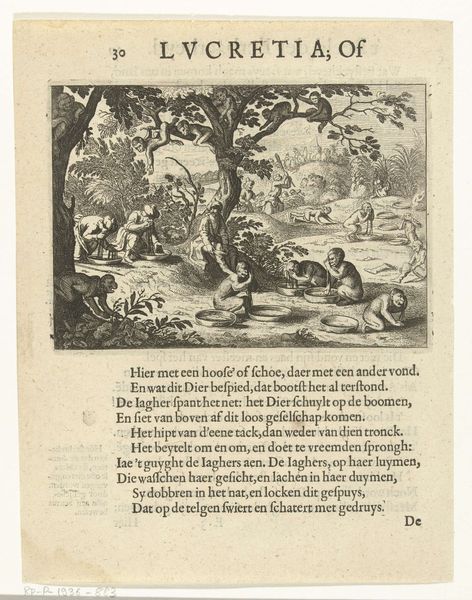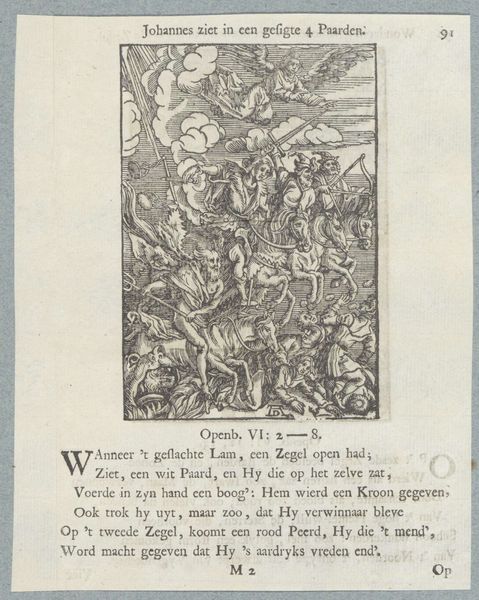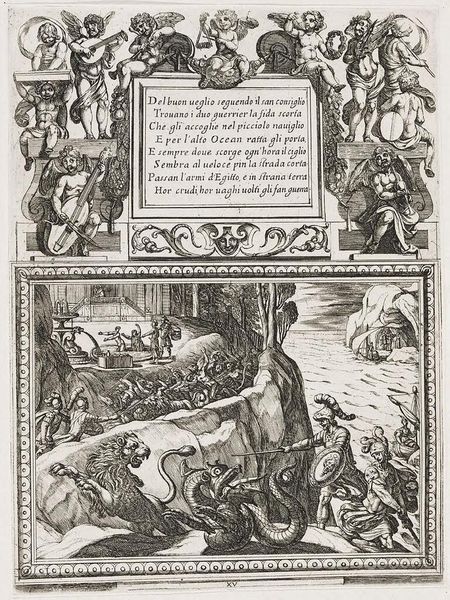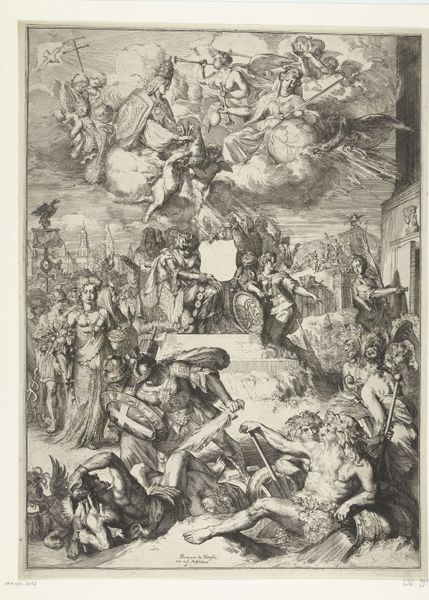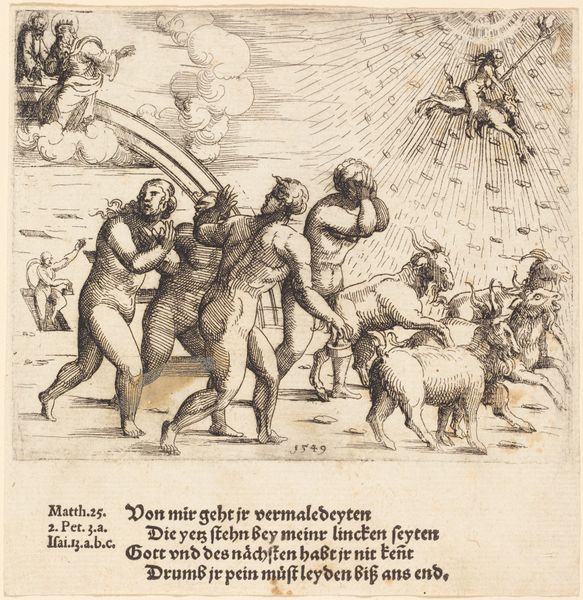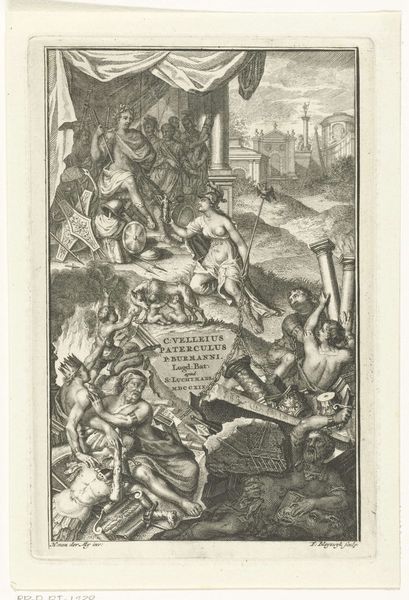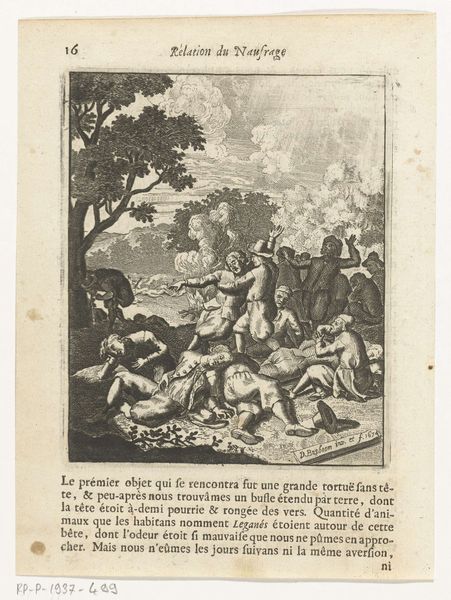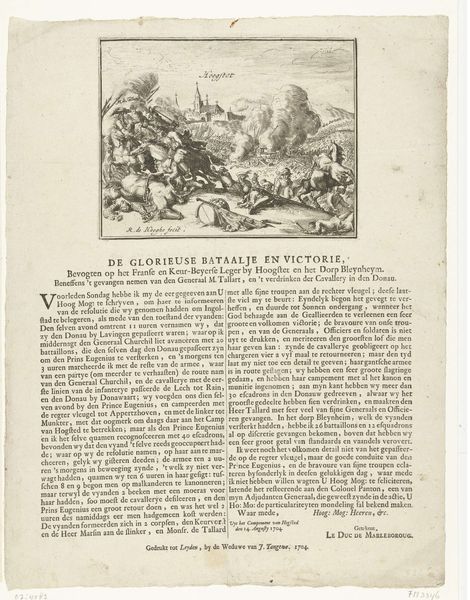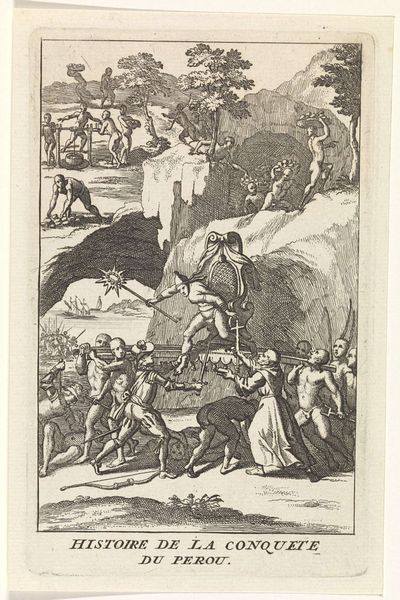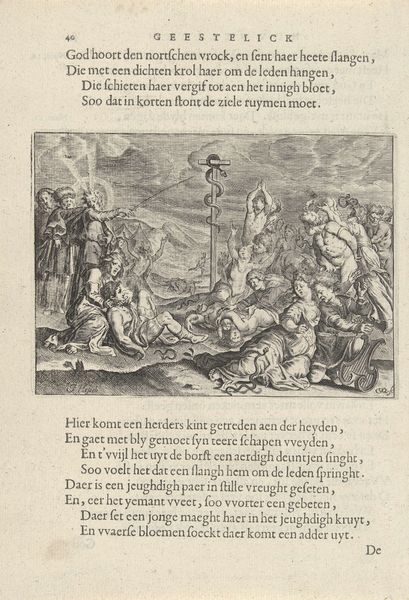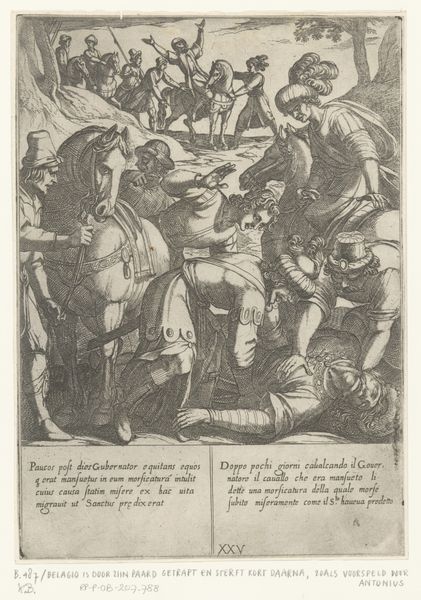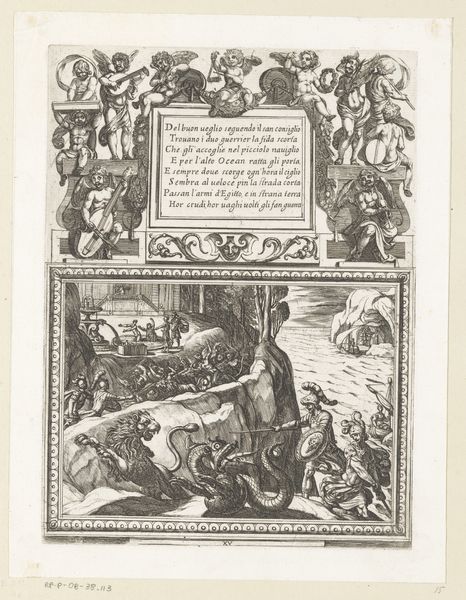
print, engraving
#
dutch-golden-age
# print
#
old engraving style
#
landscape
#
figuration
#
archive photography
#
engraving
Dimensions: height mm, width mm, height mm, width mm
Copyright: Rijks Museum: Open Domain
Curator: Here we have a rather fascinating engraving entitled "Het vangen van panters," or "The Catching of Panthers," dating back to 1624, part of the Dutch Golden Age. Editor: It’s... busy, isn’t it? Dense foliage, the spotted hides of the panthers, human figures lurking in the background… My eye struggles to find a point of entry, a clear focal point. It almost feels intentionally chaotic. Curator: The density speaks to a fascination with the exotic. Dutch printmakers often depicted scenes of overseas trade and encounters, feeding a growing appetite for knowledge and imagery of distant lands, and of course, dominance of nature. Editor: You see the panthers climbing trees and being restrained on the ground, there’s definitely a sense of conflict being conveyed. Look how stark the blacks and whites are. It creates a strong, almost theatrical, contrast across the composition, further intensifying the action. Curator: Exactly. Also consider the rise of naturalism. This image reflects an interest in the study and classification of the natural world, albeit one filtered through a European lens and understanding of animal behavior. Editor: It does look very much based on second-hand accounts, perhaps filtered through myth as well as direct observation. The stiffness of the animal's posture suggests this, for instance. There’s even text beneath the image. Curator: Yes, engraving prints such as this were popular modes to educate the masses on morality issues and worldy phenomena. The animals as representation of something much more broad. This image could have functioned almost like an early form of journalism. Editor: It certainly encourages deeper contemplation about the relationship of men with their own natural environment. I’m ultimately captivated by this sense of a world only partially grasped, teeming with unseen forces. Curator: For me, the print represents a specific moment in time when Europe was expanding its reach, fueled by a thirst for knowledge, resources, and the urge to dominate the narrative of its relationship with nature. Editor: A small artwork brimming with detail and drama, and I can definitely see the beginning of that power struggle embedded in the composition itself.
Comments
No comments
Be the first to comment and join the conversation on the ultimate creative platform.
